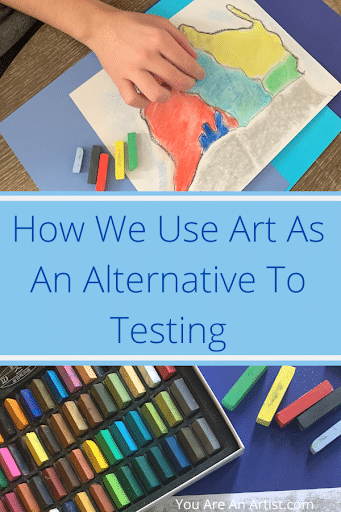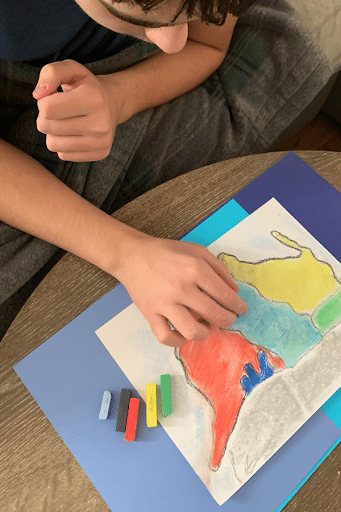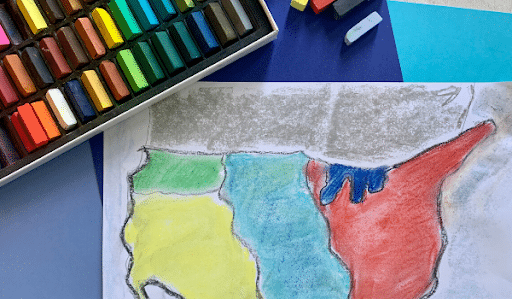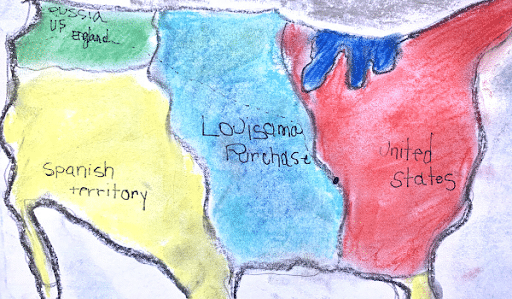Before we began homeschooling, my youngest son was in a preschool program near our home. He loved his friends. He loved to play on the monkey bars. What he didn’t like was the frequent testing. In our state, preschoolers are tested in their pre-K year for Kindergarten readiness.
Every month, his teacher would send home a summary of the test. Every month, his scores actually declined. Although my son does have some learning differences that made things like learning phonics and basic reading a challenge, I could see that even the things I knew he knew were not coming across in the test. For example, he knew all his colors. Why was he consistently not able to show this skill as part of the testing?
At the time, it baffled both me and his teacher. Years later, I now know exactly why.

Sometimes Nontraditional Learners Need A Nontraditional Approach
My son has always been a nontraditional learner. He thrives with hands-on, experiential learning. He needs music or a story to remember anything detailed, and art has consistently been an invaluable way for him to comprehend and retain learning, especially in science and math.
My child needs a different approach to his education in general. I realize now, he also needs a different approach to testing and being able to show what he’s learned.

It has taken a while for me to feel comfortable with this approach, which is exactly why I want to share it with you today. Rather than a standard multiple choice, true or false and short answer essay type of test, I have learned that the very best way to really test my son’s knowledge, is to incorporate some element of hands-on learning, especially art.
How We Use Art As An Alternative To Testing
After finishing up a unit study, my son and I sit down and complete a related art project together. When he was younger, it looked a lot like crafts. Now that he is older, it typically involves map work or some other art project displaying an element of what he’s learned.
Throughout our work together on the art project, he and I discuss what he’s learned. Sometimes, I ask him the related questions from the quiz at the end of the curriculum. Sometimes I make up my own.
No matter what the question, I ask in a very conversational manner as we work.
“Why was Thomas Edison’s light bulb the one that succeeded?”
“What is the difference between a nova and a supernova?”
“Why were castles so instrumental in Medieval culture?”
Through this casual questioning, all while my son is actively creating, I am able to get a much more thorough understanding of what he’s learned than any test could possibly provide.

What Art As An Alternative To Testing Looks Like
Recently, as we wrapped up a month long study of the Louisiana Purchase and the exploration of Lewis and Clark, we sat down to complete the Mapping Lewis And Clark Lesson. As we listened and followed along, he and I discussed what we had already studied.
After completing the map, we used it as a final “exam” as he expertly showed the boundaries of the Louisiana Purchase as well as the path of Lewis and Clark. It was not only an incredibly effective way to gauge his learning, it was a lot more fun for both of us!

Why It Works
As I consider this approach and the success that we’ve seen with it, I think there are two main reasons why this works.
1. Movement and Activity
For my child, and I know for many others, focus can be a challenge. This is especially true when trying to recall information and communicating what he’s learned.
The movement and hands-on activity associated with art better allows my son to focus. This is true for him in all learning, so it makes sense that this would also be an important component in how we test.
2. Decreased Test Anxiety
My son is a perfectionist by nature. When I think back to his preschool testing and how every month, he actually performed worse than the month prior, I can see now that his own worry and stress associated with the testing itself, got in the way of us really being able to see what he’d learned.
Taking an artistic approach to testing eliminates his test anxiety completely. He is more effectively able to show what he’s learned, because the testing environment is one that is conducive to his strengths and learning needs.
Overall, this has been so successful for us. Using art as an alternative to traditional tests is exactly what we needed to accurately gauge his learning. If you have a child who is a struggling learner or who experiences test anxiety, I highly encourage you to consider this approach.
After all, how we test is not nearly as important as seeing that our children are learning and making progress.

Shawna Wingert is a special education teacher turned writer, speaker and consultant. She is also a homeschooling mom of two brilliant boys with differences and special needs. Shawna has written four books for parents – Everyday Autism, Special Education at Home, Parenting Chaos and her latest, Homeschooling Your Child With Special Needs. She helps parents of children with learning differences, behavioral challenges and special needs every day at DifferentByDesignLearning.com.
